Culture technology: breeding and pest control of Chunjian
Spring Jian is often called authentic Sichuan orchid. Although there are famous products in Yunnan, Guizhou and Sichuan, Sichuan orchid is the most expensive. Chunjian is a monocotyledonous plant, belonging to Orchidaceae. It is 20-40 cm high, with long barrel-shaped roots, evergreen leaves all the year round, elegant posture and charm. It is one of the flowers often cultivated by flower lovers.
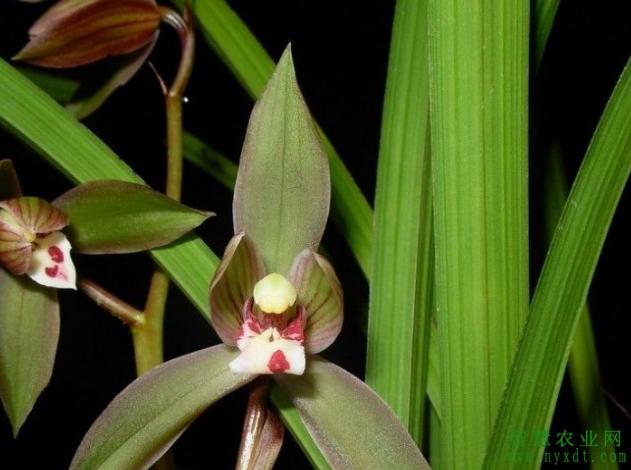
Planting and cultivation
Spring sword is suitable for planting in spring. Before planting, clean the roots and leaves of spring sword with clean water, then trim the residual and rotten roots, and remove all the diseased leaves and dry leaves. Then soak the roots of the spring sword for a while with diluted potassium permanganate solution and dry them for a day before planting.
Water management
Spring Jian likes a more humid environment, but the flowers are afraid of waterlogging, so be careful not to water too much and keep the soil slightly moist, generally speaking, when the basin soil is slightly dry. Watering is best carried out in sunny weather, it is more appropriate to water in the warmer time in the morning, it is best not to water in cloudy and rainy weather, to prevent waterlogging, and to be careful not to water thoroughly when watering in winter, as long as you keep the soil slightly moist. Watering is best to use weakly acidic softened water, tap water should not be used directly, can be dried in the sun for a day or two and then used for watering. When watering, do not pour water directly on the branches and leaves, you can slowly pour through along the edge of the flowerpot, be careful not to accumulate water, otherwise it is easy to rot the roots.
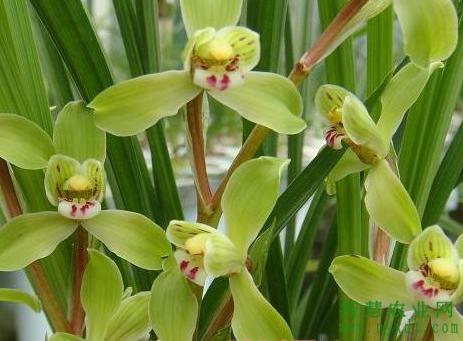
Fertilizer management
Spring Jian likes fertilizer better, so it is necessary to spread a layer of base fertilizer at the bottom of the pot when planting. Potted spring swords that have applied base fertilizer should be careful not to apply fertilizer again this year, otherwise it is easy to burn the roots with overnutrition. The spring sword of the next year can be fertilized properly before flowering or after sprouting new buds, the amount of fertilizer should not be too heavy, it can be applied thinly, and the seedlings can add a little nitrogen fertilizer. It should be noted that it is not suitable to apply fertilizer when the temperature is too high or too low.
Light management
The control of light is an important aspect of the maintenance of spring sword, if the sunshine is too strong or too much, it will cause spring sword leaves to yellowing or even wither and fall off. If the sunshine is too little, it will slow down the growth of spring sword, affect the germination of flower buds, and reduce the amount of flowering. The right amount of sunlight will make the spring sword grow vigorously, sprout more buds and improve the quality of flowering.
Pest control
The diseases and insect pests of spring sword had better be prevented in advance. In peacetime, attention should be paid to sterilization and disinfection of plants and concessions. Liquid spray can be used to spray the leaves of spring sword to improve the immunity of branches and leaves. If diseased leaves are found, the diseased leaves should be cut off in time to prevent the disease from expanding.
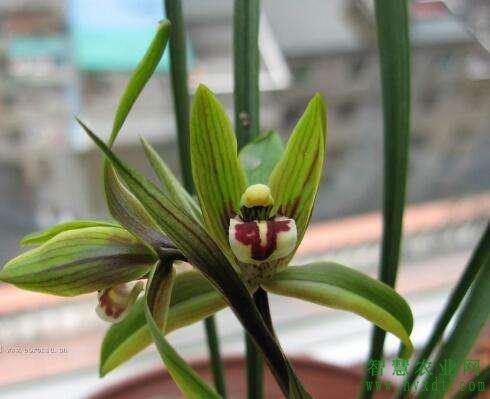
Morphological characteristics
The leaves of Cymbidium are tufted, with 4-7 leaves, 1.2-1.5 cm wide, 50-70 cm long and longer individuals. Narrow band, upright, thin leathery and stiff, green leaves. Leaf margin has shallow teeth, apex pointed. The cross section of the leaf is V-shaped, the midvein is protruding and the lateral vein is obvious. Petiole ring inconspicuous. The leaf sheath is thin leathery, 9-15 cm long, tightly wrapped in the leaf base, and the leaf still burns tightly after the leaf is mature. In addition, there are soft leaf species and dwarf leaf species. Flowering stem erect, pseudobulb elliptic tufted, 1.3-1.7 cm in diameter and 1.5-2.0 cm high. The root is short and thick, uniform in thickness, unbifurcated, 20-30 cm long and 6-9 cm in diameter, the sepals are oblong-lanceolate, the middle sepals are erect and slightly tilted forward, and the lateral sepals are oblique to the left and right. There are 2 to 5 flowers, sometimes 7, with bracts longer than ovary peduncles; petals shorter than sepals, with three purplish-red stripes at the base, and lip ends obtuse and revolute. Spring sword leaf posture tall and straight Cangjian, exquisite, quite elegant. The florescence is from February to March and is in full bloom in the first and middle of March. Pedicel arising from the base of pseudobulb or inside of leaf sheath, cylindrical, erect, 17-35 cm long. The pedicle sheath has 5-6 pieces, translucent, clasping pedicel and lower synthetic tube. Racemes with 2-5 flowers and more individual flowers. Flowers are generally 5.5-7 cm in diameter, or larger. There are light green, water red, purple, brown green, brown purple and other colors, generally have cloth color veins or spots, but there are also non-color varieties of vegetarian heart. Spring Jian was first regarded as a variety of Cymbidium, and later it was designated as an independent species.
Source of the article [China Intelligent Agriculture official website]
- Prev
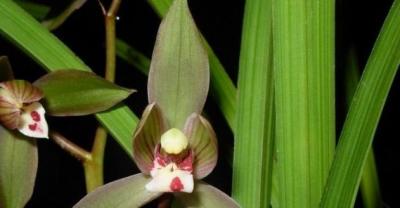
Culture technology of baby fish and prospect of giant salamander culture
Baby fish, commonly known as giant salamander, is a national second-class key protected wild animals. Chinese giant salamander except Xinjiang, Xizang and Inner Mongolia. Heilongjiang, Jilin, Liaoning, Taiwan.
- Next
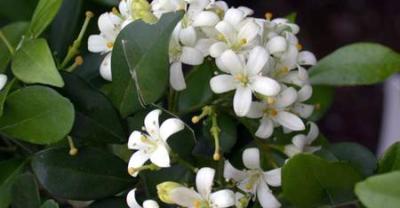
Selection of earthworm culture sites and 12 culture methods
Outdoor breeding site selection: first, site requirements 1, back to the sun, ventilation, good drainage, in order to adapt to earthworms like dark, daytime and night habits. 2. The venue.
Related
- On the eggshell is a badge full of pride. British Poultry Egg Market and Consumer observation
- British study: 72% of Britons are willing to buy native eggs raised by insects
- Guidelines for friendly egg production revised the increase of space in chicken sheds can not be forced to change feathers and lay eggs.
- Risk of delay in customs clearance Australia suspends lobster exports to China
- Pig semen-the Vector of virus Transmission (4)
- Pig semen-the Vector of virus Transmission (3)
- Five common causes of difficult control of classical swine fever in clinic and their countermeasures
- Foot-and-mouth disease is the most effective way to prevent it!
- PED is the number one killer of piglets and has to be guarded against in autumn and winter.
- What is "yellow fat pig"? Have you ever heard the pig collector talk about "yellow fat pig"?

